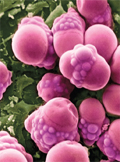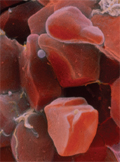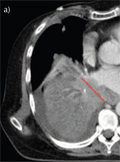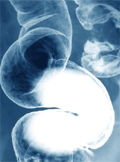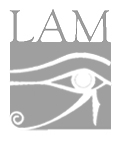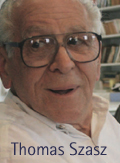The eLitMed.hu medical portal uses computer cookies for convenient operation. Detailed information can be found in the Cookie-policy.
Lege Artis Medicinae - 2010;20(09)
Content
[Incretin based therapies from a clinician’s view]
[The incretin based therapies give new and promising opportunities in the care of type 2 diabetic patients. Right now two kinds of incretinmimetics and three incretinenhancers are available in Hungary. There are more and more agents and more industrial products. There are several publications about the advantages of these products, but only a few data can be found about the comparison of them. The author tries to evaluate the incretin based therapies, and tries to help the clinicians choose the right one.]
[New era of anticoagulation]
[Two types of anticogulants have been introduced into the clinical practice and used succesfully for more than 60 years: the heparins and the cumarins. Blood coagulation is targeted by the two drugs on many sites, their inhibitory action is not specific. The hirudins as specific trombin inhibitors have been introduced later for specific indications. After the discovery of the exact structure of the clotting factors, the drug development could have been directed against its active center which made possible the development of more specific anticoagulants. Some attributes of an ideal anticoagulants: sufficient efficacy with safe administration, predictable therapeutic effect with fixed dosing, no need for monitoring, oral administration, to have a specific antidote, no food or drug interactions. New anticoagulants are inhibitors of the initiation of blood coagulation. Tissue factor pathway inhibitors; inhibitors of the propagation of clotting process: activated protein C; indirect factor Xa inhibitors (requiering antithrombin to its actions: pentasaccharide, idrabiotaparinux and ultra-low-molecular weight heparins); direct FXa inhibitors, acting without antithrombin: rivaroxaban and apixaban; and out of the direct oral thrombin inhibitors acting against fibrin-formation, dabigatran-etexilate are discussed.]
[Efficacy and safety of sitagliptin during long term treatment in patients with type 2 diabetes]
[Due to the progressive nature of the type 2 diabetes mellitus and treatment requires prolonged lifestyle and/or pharmacologic management, the long term efficacy, durability and safety of newer antihyperglycemic agents are important considerations. Metformin is the most common prescribed oral antihyperglycemic agent (OHA) for initial therapy. Often, initial single oral agent is not sufficient to maintain good glucose control, combination of OHA are usually required to manage patients with type 2 diabetes. Incretinbased therapies (e.g. dipeptidyl peptidase 4 (DPP 4) inhibitors and analogues of glucagon like peptide 1) are newer compounds available for the treatment of type 2 diabetes. Sitagliptin is a once-daily OHA with a novel mechanism of action that targets the incretin axis. Addition of sitagliptin to ongoing metformin therapy was well tolerated and resulted in significant glycemic improvement after 30-104 weeks of treatment in patients with type 2 diabetes.]
[The multidisciplinary pathological examination of colorectal carcinomas - From the biopsy sample to the K-RAS mutation analysis]
[BACKGROUND - The role of pathologist in the reporting of colorectal carcinomas (CRC) has dramatically changed in the past 20 years. This change has been generated by the enormous progress in the surgical, radiological, oncological and pathological techniques and their interactions. AIM - To interpret the role of pathologist in the colorectal multidisciplinary team. METHODS - The most important histopathological prognostic and predictive factors, the surgical planes, the involvement of circumferencial margin, the regression grade after neoadjuvant chemoradiotherapy were assessed in 964 patients treated with operable colorectal cancer during 2001-2007 in the County Hospital of Baranya and the four nearby city hospitals. RESULTS - Most of our patients (>75%) were treated with advanced stage tumors. The lymph nodes were harvested through careful slicing, visual inspection and palpation - accordingly the average lymph node count increased from 7.45 to 19.0. After using elastic fibre stain we detected twice as much vascular invasion then before. The results of the surgical quality after TME and APER were somewhat dissapointing. Although the ratio of the specimens resected in the mesoretal fascial plane was comparable to the international results (39.8%), the ratio of resections in the muscularis propria plane was unacceptably high (47.8%) and it was more pronounced (50-100%) between the low volume surgeons of the small city hospitals. The involvement of the circumferencial resection margin was affected by the advanced pT and pN stage, the vascular invasion, the surgical plane, the type and number of resection performed by the surgeons, the regression grade after preoperative chemoradiotherapy and the gender. CONCLUSIONS - In addition to the traditional histopathological features the pathologist has to investigate the quality features of the preopreative assessment, the surgical planes of excision and the grade of regression after neoadjuvant chemoradiation and feed back these results to the members of the CRC multidisciplinary team. The optimal treatment of the CRC can be achived only in this setting.]
1.
Clinical Neuroscience
Is there any difference in mortality rates of atrial fibrillation detected before or after ischemic stroke?2.
Clinical Neuroscience
Factors influencing the level of stigma in Parkinson’s disease in western Turkey3.
Clinical Neuroscience
Neuropathic pain and mood disorders in earthquake survivors with peripheral nerve injuries4.
Journal of Nursing Theory and Practice
[Correlations of Sarcopenia, Frailty, Falls and Social Isolation – A Literature Review in the Light of Swedish Statistics]5.
Clinical Neuroscience
[Comparison of pain intensity measurements among patients with low-back pain]1.
Clinical Neuroscience Proceedings
[A Magyar Stroke Társaság XVIII. Kongresszusa és a Magyar Neuroszonológiai Társaság XV. Konferenciája. Absztraktfüzet]2.
3.
Journal of Nursing Theory and Practice
[A selection of the entries submitted to the literary contest "Honorable mission: the joys and challenges of our profession" ]4.
Journal of Nursing Theory and Practice
[End of Life and Palliative Care of Newborns in the Nursing Context]5.
Journal of Nursing Theory and Practice
[Aspects of Occupational Health Nursing for Incurable Patients ]



